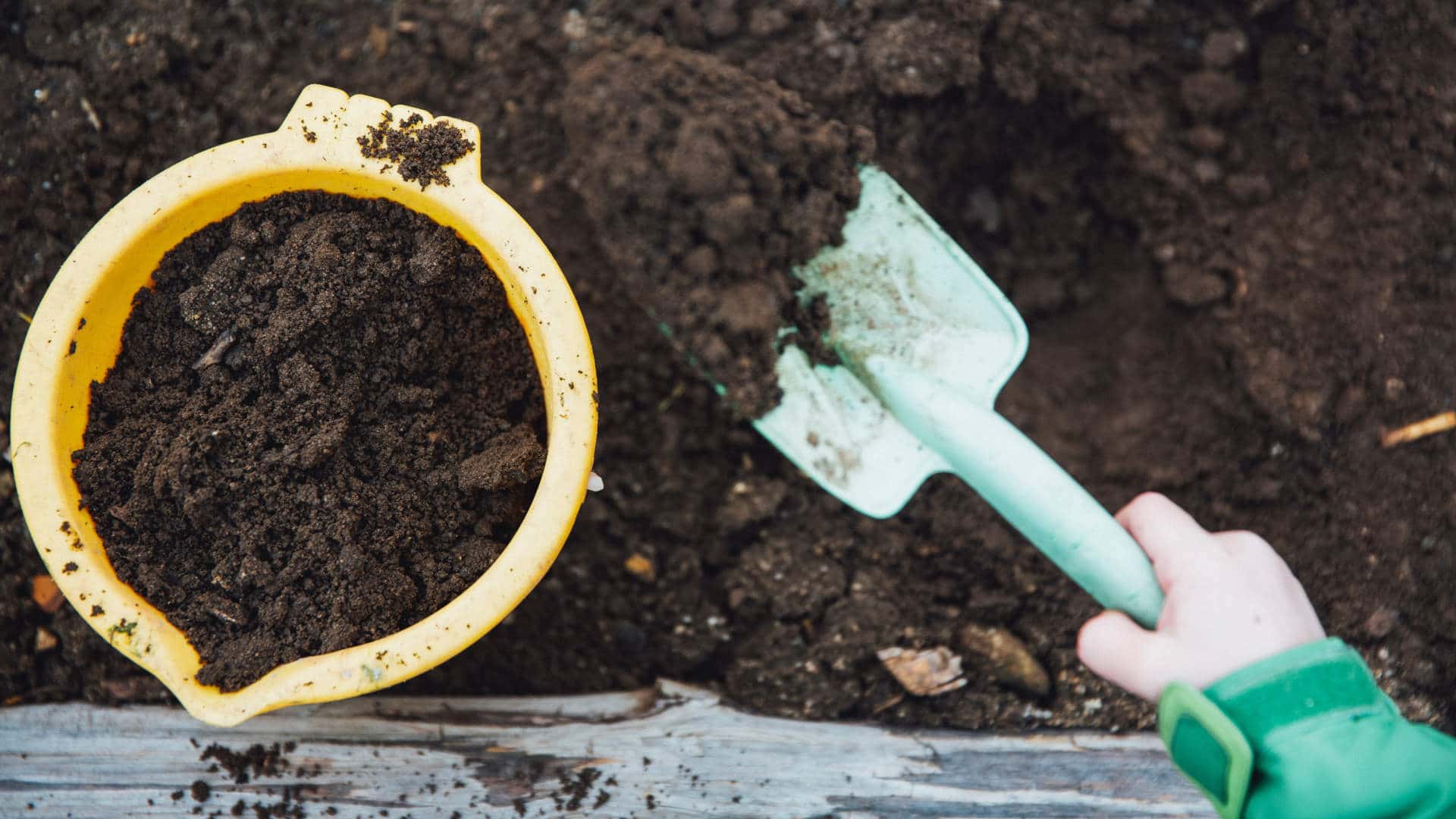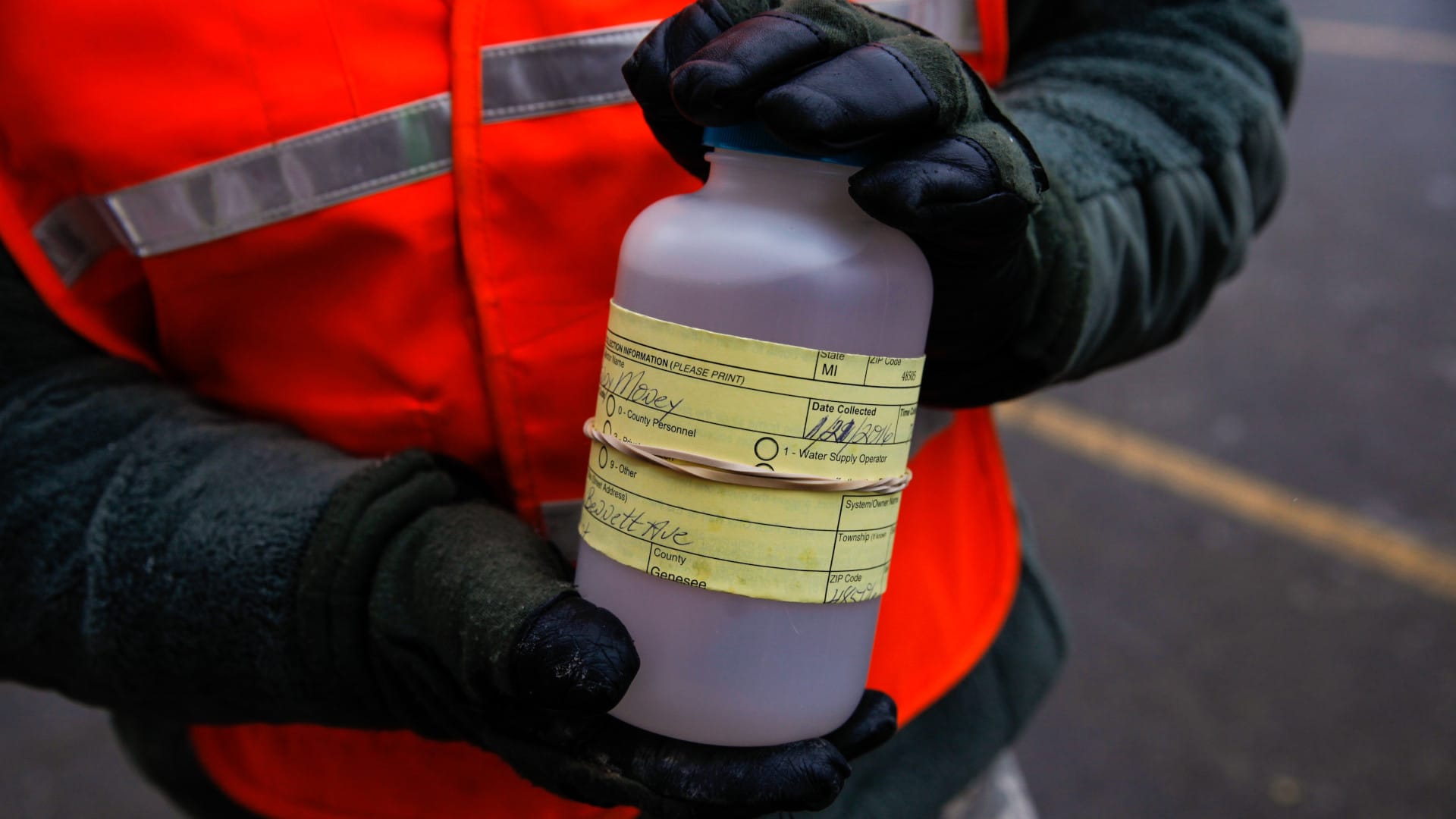Not too long ago, as a graduate student, I took a crash course in lead. I moved to Vermont from the Midwest to study the geochemistry of lead in soil, and because I needed samples for my project, my professor and I decided to test a 100-year-old house his family had bought. Houses of that age are poisonous onions; peel back the outer layers and you are likely to find leaded paint, which the federal government didn’t ban for residential use until 1978. Decades of wind and rain had scattered paint chips around the outside of the house. We twisted augers into the ground and came up with ten bags of soil while his wife painted the living room and his 6-year-old son played in his bedroom.
Back in the lab, I ground up a few tablespoons from a sample and analyzed the powder with an X-ray gun. The lead concentration was more than 25 times the limit the Environmental Protection Agency deems hazardous in soil. The proportion of lead-to-soil was near the proportion of chili powder in a good chili.
It was a scary reminder that despite all the protective behaviors we might knowingly adopt — be mindful when renovating an old home; wear a respirator at the firing range — lead is invisible and all around us. I was stunned to learn that lead arsenate, a pesticide that was applied for nearly a hundred years in American apple orchards, was likely contaminating soil in abandoned farm fields where I hoped to find tasty morels. Preliminary data suggest that the mushrooms sometimes absorb soil lead at levels that exceed the Food and Drug Administration’s limit for safe consumption.
Unfortunately, the last presidential administration missed an opportunity to meaningfully strengthen the out-of-date standards for contaminants like lead, and even loosened some restrictions. This is despite a steady stream of science linking lead to terrible health outcomes, especially for children, and gut-wrenching news items identifying more and more exposure pathways, such as the recent report of a House oversight subcommittee that found elevated lead in many common baby foods (even in some organic brands).
While some petroleum-based contaminants decay over time, lead does not biodegrade to become less harmful, meaning it tends to stay in place. Despite our best intentions, removing lead-contaminated soil around each lead-painted home in the U.S. would involve landfilling valuable soil, costing nearly $10,000 per home. With 38 million homes estimated to harbor lead-based paint as of 2002 — a figure that is likely lower today, due to demolitions — getting rid of all lead-contaminated soil around houses would be an impossible task. And landfilling lead-contaminated soil doesn’t really end the problem. It just shifts the burden to a different area within range of a hazardous waste dump. Removing the topsoil where lead tends to accumulate also displaces a highly biodiverse part of the soil ecosystem. Although it gradually sinks deeper into the soil over time, if it doesn’t hitch a ride on a SpaceX rocket, lead is here to stay.
The most sustainable clean-up solutions for lead-contaminated soil involve simply planting shrubbery, so the soil is less likely to move — or be eaten by a two-year-old. Another alternative is to manipulate the behavior of the element by adding phosphate, which binds tightly to lead and makes it less likely to be absorbed by humans and other organisms.
Lead presents a tangle of complexities. Leaded pipes can safely carry tap water to a city’s homes for decades, or they can corrode and dissolve into the water supply when the treatment protocol is altered (as was the case in Flint, Michigan). Lead is tightly held by organic matter in topsoil, but traces in city dust still end up on playground equipment during dry summer months. Soil lead levels on remote mountaintops can rival those along busy highways, swept there by wind currents saturated with engine exhaust. In cities, lead’s distribution in soil is unpredictable — it might spike near a source of old paint but plunge to almost nothing a few meters away. Without expensive testing, even trained experts struggle to predict overall levels of lead contamination. Unlike with carbon monoxide, there is no cheap sensor you can install to alert you to potential exposure. People might obtain lead testing around their home with a portable X-ray gun before purchasing or remodeling a home, but sources of lead contamination can be diffuse, and in many cases exposure is only detected with a blood test after lead has been absorbed.
So we are left to rely on regulations to protect us. But even in progressive states where environmental regulations are strict, poisoning of soil and water is usually self-reported, or uncovered only after people are harmed. A Vermont official once told me the state’s rules around illegal dumping were like “asking a murderer to call 911 to report the murder.” And the fines, in any case, are usually a fraction of the profits.
Even the ancient Romans understood that lead was toxic, but industrial interests in the U.S. kept it from being regulated at the federal level for decades despite its dangers being known. And there were safer alternatives. Thomas Midgley Jr., a scientist at General Motors — who in the 1920s invented the lead gasoline additives used to prevent a then-common problem caused by uneven combustion in car engines called knocking — had previously engineered a plant-based additive capable of performing the same function. But this safer alternative was scrapped because it was unpatentable, condemning four decades of children to lead poisoning.
The specter of lead in the U.S. pales in comparison to the risks it poses in other countries. Small-scale lead recycling, common in developing countries, creates lead levels in soil and air that endanger whole communities. The U.N. children’s agency UNICEF estimates that one in three children globally is affected by poisonous levels of lead in their blood. Still used in batteries, solder, bullets, and airplane fuel, lead continues to wander around our communities like an evil ghost. Although it is efficiently recycled, a leaky recovery pipeline means it will continue to slip through the cracks and accumulate in our soil, water, air, food, and bodies unless we eliminate our reliance completely.
All of which is a strong argument for government intervention. Individual action is not enough: In the absence of our own ability to detect risk, we must rely on regulation and remediation of environmental hazards by elected officials and experts. The problem of lead is reminiscent of other big problems that bear down disproportionately on communities of color. Environmental justice groups led by Black and Indigenous activists have been advocating for lead-safe communities for decades, and the time for action is long past due.
Congress should expand and strengthen the federal law regulating toxic chemicals to incorporate the EPA’s finding that there is “no safe level” of lead exposure for children by banning lead in ammunition, solder, and imported goods. The FDA should strengthen existing recommendations for foodborne lead limits by converting them from guidelines into regulations. President Joe Biden should issue an executive order ending the country’s reliance on unregulated foreign battery recycling, a significant source of lead emissions, to address a major global environmental justice concern. Passage of the recently introduced Green New Deal for Cities would sustainably remediate sources of lead in urban areas, prioritizing communities of color and low-income communities. And perhaps it’s time to envision a Clean Soil Act, like the Clean Air and Clean Water Acts mobilized by popular environmental advocacy in the 1960s and 70s, which could protect soil ecosystems and the health of people who live on them.
Soil holds a long, unfailing memory. The lead by my former adviser’s house will remain, as will the lead that haunts so many other communities. It’s not going away on its own, and our leaders need to come to grips with that reality.
Jenny Bower is a PhD candidate at the University of Vermont.












Comments are automatically closed one year after article publication. Archived comments are below.
Came across your article. It is excellent.
One overlooked lead hazard is tile—ceramic and porcelain. There are no regulations for tile, really, no limits. Millions of homes contain leaded tile and homeowners are unaware. As such, tile gets demolished, lead dust spreads and contaminates homes, and kids are exposed. The EPA knows but explicitly left lead out of their RRP rules.
If tile were treated like lead paint, as it should be, lead exposure would become an issue for most homes in America. Who doesn’t have tile?